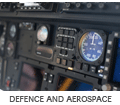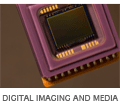EPaper
Introduction
Electronic paper, e-paper, or electronic ink, is a display technology which is similar to reading ordinary ink on paper. Electronic paper is capable of high quality display, is much easier on the eyes than LCD displays due to the lack of a backlight and is able to maintain an image with no power supply. Electronic paper is viewable at almost any wide angles unlike LCD displays which tend to operate only marginally at up to 170 degrees. Electronic paper is also very thin (1mm or less) and flexible.
Electronic paper is made up of transparent capsules which contain a black dye and many white titanium dioxide particles. The capsules form the pixels for electronic paper and have a naturally white appearance. Applying a negative voltage to a capsule repels the white titanium dioxide particles to the bottom and forces the black dye to the top, causing the colour of the pixel to change from white to black.
Colour electronic paper can be made by adding a coloured optical filtering layer above the capsules. The capsules are divided into groups of three, typically cyan, magenta and yellow and use the subtractive CMYK colour format. Fujitsu has been working on this technology and it at a trade show in 2006.
For more information on monochrome electronic paper see .
Limitations
Electronic paper has a low refresh rate, taking up to a second to redraw the screen and often requires that all of the pixels be toggled to one colour first. This makes it unsuitable as a replacement for standard displays. However, it is useful for display less frequently updated content such as book pages, advertisements or newspaper articles.
Applications
One of the most common applications of electronic paper is in book and newspaper readers. These devices are often called e-books, or e-book readers. The nature of electronic paper makes it suitable for reading for extended periods of time, unlike LCD displays which can hurt or fatigue the users eyes.
Bluewater Systems Experience
Bluewater Systems evaluated a number of electronic paper development kits in the feasibility of a project called Turbot.

Rig 200 Support
Rig 200's Display Plus Option can drive from 5" to 9.7" using E-Ink's standard controller chip. Other more esoteric displays may require the Display Plus Option's FPGA to be programmed to generate appropriate signals.





